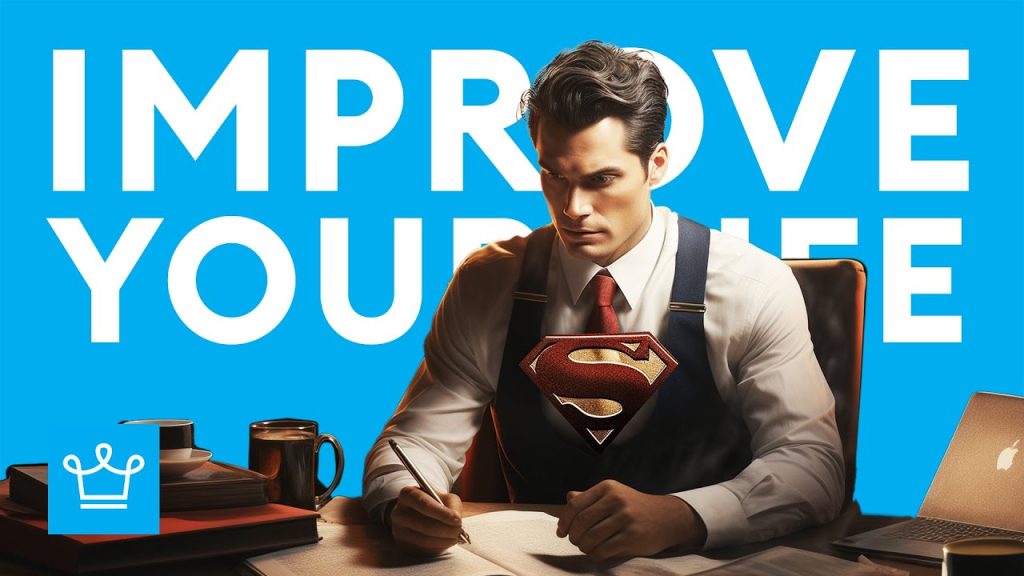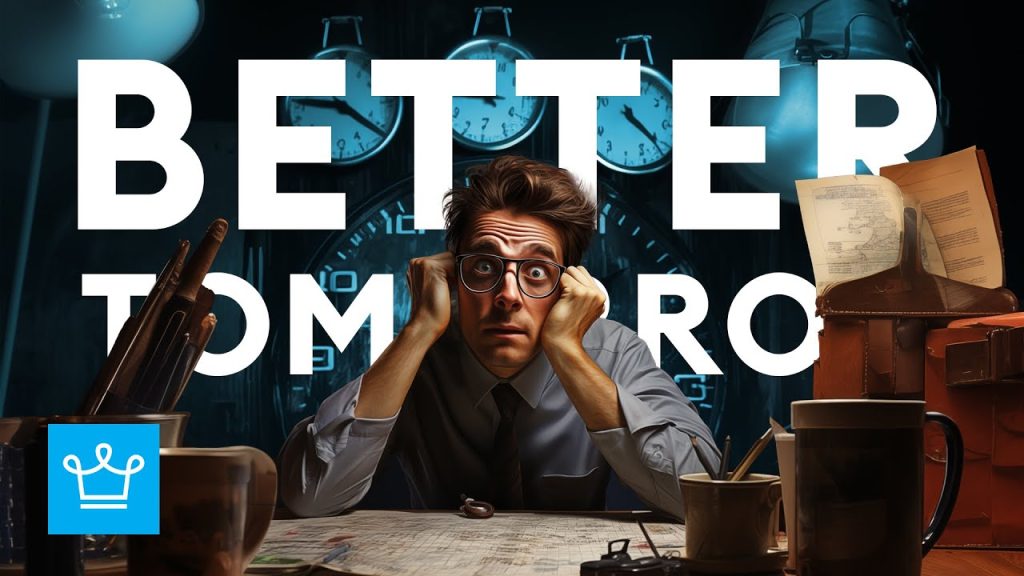An Inside Scoop on How Red Bull Became The KING Of Energy Drinks!
Hello and welcome to another original article brought to you by Alux.com. In today’s hectic world, people all across the globe are looking for ways to boost their productivity and focus even when they haven’t had a sufficient amount of sleep. Coffee has been the traditional answer for a quick caffeine fix, but increasingly people have been turning to energy drinks to bridge the gap between a lack of sleep and things that must get done.
There are a ton of energy drink brands available on the market, but the undisputed king is Red Bull. Today, we’re going to talk about why they are the king and how they claimed that title, but first let’s take a quick look at the energy drink market as a whole.
- The Big Picture
- The Beginning
- Strategy and Marketing
- Global Expansion
- Results
- Controversy
- The Future
- Closing
- Question
If you’re one of those Aluxers who would rather watch visuals over text, here’s the whole article covered for you in the form of a video:
With that checked out, let’s discuss how Red Bull became the king of energy drinks:
The Big Picture
In 2018, the global energy drink market size was around 45 billion dollars, but by 2025 the market size is expected to nearly double to 84.8 billion dollars. The energy drinks segment is the fastest growing segment in the soft drinks industry, and based by the future growth projections, you can clearly see that this rapid development likely won’t be slowing any time soon.
The largest markets for energy drinks are the United States and Japan, but the countries where the market is growing the fastest are India, China, and Brazil.
Their biggest competition in the non-alcoholic beverage industry are brewed coffee, ready-to-drink-tea, and soda, but energy drinks consistently represent a solid 16 to 18 percent of the total non-alcoholic beverage market. Although there has been some controversy connected with these drinks as well as health concerns, there has been a growing acceptance for consumption of energy drinks worldwide.
A number of new brands of energy drinks enter the market yearly, but consumers of these drinks tend to be brand loyal, so the majority of the sales go to well-established brands like Red Bull, Monster, and Rock Star. But today, of course, we’re focusing on Red Bull, so let’s see how that brand first got its start.
Resource: Aston Martin & Red Bull Released Vantage S Racing Edition Sports Cars
The Beginning
The original Red Bull recipe was created by Thai businessman Chaleo [Ch-al-ee-oh] Yoovidhya [You-videa]. Chaleo had started his own pharmaceutical company in Thailand, and the drink he created was intended to be a tonic to keep truck drivers and factory workers alert during long shifts.
He sold the unique combination of caffeine, taurine, water, sugar, and B vitamins as a drink called Krating Daeng [Krah-ting Dang], which is Thai for Red Bull.
The drink was first marketed in 1976, when Chaleo was 53. In 1982, an Austrian entrepreneur named Dietrich Mateschitz [Mat-uh-shits] discovered the drink while on a sales trip in Asia. He was amazed by it because it seemed to magically cure his jet leg.
The two worked together to create a formula of the drink that would be more palatable for Westerners. Chaleo was the primary one in charge of the formula, while Dietrich focused more on the marketing. They each contributed 500,000 dollars towards the business and split the ownership of Red Bull with each owning 49 percent of the company.
The remaining two percent of ownership was given to Chaleo’s son Chalerm. By 1987, they were ready to introduce Red Bull to the Austrian market.
Strategy and Marketing
When Chaleo first introduced the drink, it was geared toward blue collar workers, but Dietrich had a different marketing strategy. At first he wanted Red Bull to be a more upscale drink. He started by targeting Austrian Ski Resorts, offering the drink at a higher price point with the promise that it would increase focus and stamina. Later when the U.S. market was targeted, Red Bull was marketed as a lifestyle brand.
The company aligned with extreme sports like skydiving, paragliding, motorcross, BMX, and snowboarding. Guerilla marketing techniques were also used, for example, Red Bull girls handing out free drinks to college students in campuses across the U.S. In 1997, the company began advertising using the slogan “Red Bull gives you wings.” The brand has cultivated a cool and edgy image in part by partnering with and acquiring a number of sports teams.
They also hold numerous unique events like the cliff diving world series, the drifting world championship, motorcycle grand prix races, and the famous Red Bull Flugtag, where competitors attempt to make home-made, human-powered machines fly after being launched over a body of water. These marketing strategies have proved to be incredibly effective and have greatly contributed to the company’s success today.
Resource: Red Bull is a Leading Brand: 15 Reasons Why
Global Expansion
In 1992, after a successful launch in Austria, the product was first offered in Hungary and Slovenia. Two years later, the company had a huge boost in sales when they expanded to Germany and the U.K. This paved the way for a product rollout in the United States in 1997 followed by an expansion into more European markets
Finally the Middle Eastern and the Asian markets were targeted in 2000. In 1996, the company sold 6 million cans of Red Bull. Ten years later, that number had jumped to 300 million cans per year. By 2012, Red Bull was being sold in 165 countries with over 5 billion cans sold per year.
Results
Since the founding of the company in 1987, Red Bull has sold over 75 billion cans of its famous energy drink. Red Bull is now sold in 171 countries globally with 19 different varieties, including peach, lime, pear, orange, and kiwi. In 2018, 6.8 billion cans were sold worldwide, an 8 percent increase from the year before.
Red Bull leads the sales figures for energy drinks in India, which is the fastest growing market worldwide with a 30 percent increase in sales in 2018. In 2019, Forbes listed Red Bull as number 71 on their list of the world’s most valuable brands with a brand value of 9.9 billion dollars. Although Chaleo passed away in 2012 at the age of 89, Dietrich Mateschitz continues to run the company with his unconventional leadership style.
Although the company has experienced incredible success, it has also faced a number of scandals and criticisms over the years.
Resource: Cool Your Drinks This Summer with The $325 Ice Cubes
Controversy
Red Bull has had more than its fair share of controversy in its short history. Most of the controversy is linked to health concerns due to the drink’s high caffeine content and the use of taurine; however, each can contains about the same amount of caffeine as a cup of coffee. Studies have found that only when these drinks are consumed excessively are there risks for cardiac and psychiatric conditions, but these are the same risks that are associated with all drinks that contain caffeine.
These risks are magnified with children, teens, and young adults. The European Food Safety Authority concluded that the level of taurine in Red Bull is not a safety concern.
Nevertheless, over 20,000 energy-drink related emergency room visits occur every year in the United States alone. In the year 2000, an 18-year-old man in Ireland named Ross Cooney passed away after drinking four cans of Red Bull prior to playing a basketball game. This led to Red Bull failing to gain market approval in France, although it was never proven that Red Bull was responsible for the death.
This ban was eventually overturned by the European Court of Justice in 2004 after no definitive health risk could be determined.
Norway also banned Red Bull for a time, and the UK investigated the drink as well, but today all member states of the European Union allow sales of the drink. Some of the difficulties they have had to overcome dealing with the stigma connected with energy drinks – and the valid health concerns connected with caffeine – may explain why they are now exploring an entirely different market.
The Future
In order to reach out to a more health-minded market and to capitalize on the growing popularity of organic food and beverages, Red Bull has dedicated some of its immense resources to developing a range of four organic sodas. These are marketed with the tagline “boldly sophisticated.” The flavors they have developed so far are simply cola, bitter lemon, ginger, and tonic water.
With the exception of the Simply Cola option, these premium organic sodas are made without caffeine and instead offer natural ingredients with no additives or artificial ingredients. Although Red Bull has no plan to abandon their traditional recipes, these organic sodas reach a target market that previously went untapped with the Red Bull line-up. The company stresses that these are not energy drinks.
There was a limited launch of the drinks in the United States in 2018, and in the future Red Bull plans on expanding organic sales globally.
Closing
Red Bull is not only the leader in the energy drink market but also the founder of the entire segment. Their innovative product and unconventional marketing paved the way for numerous competitors who are trying to grab a share of the market. But Red Bull is KING because no other competitor even comes close to their success. Because they were first on the scene and energy drink consumers have proven to be incredibly loyal, they retain the highest number of consistent customers.
In their biggest market, the United States, classic Red Bull claimed 24.9% of all energy drink sales through August 2019 with 2.89 billion dollars in sales. Their closest competitor is Monster Energy with 15.1 percent of sales. Worldwide, Red Bull claims about 43 percent of the global market while Monster claims about 36 percent. It doesn’t look like Red Bull will be dethroned anytime soon.
Question
Now that we’re wrapping up this article, we’d like to know: Is Red Bull your go-to energy drink or do you have another favorite? Let us know in the comments.






